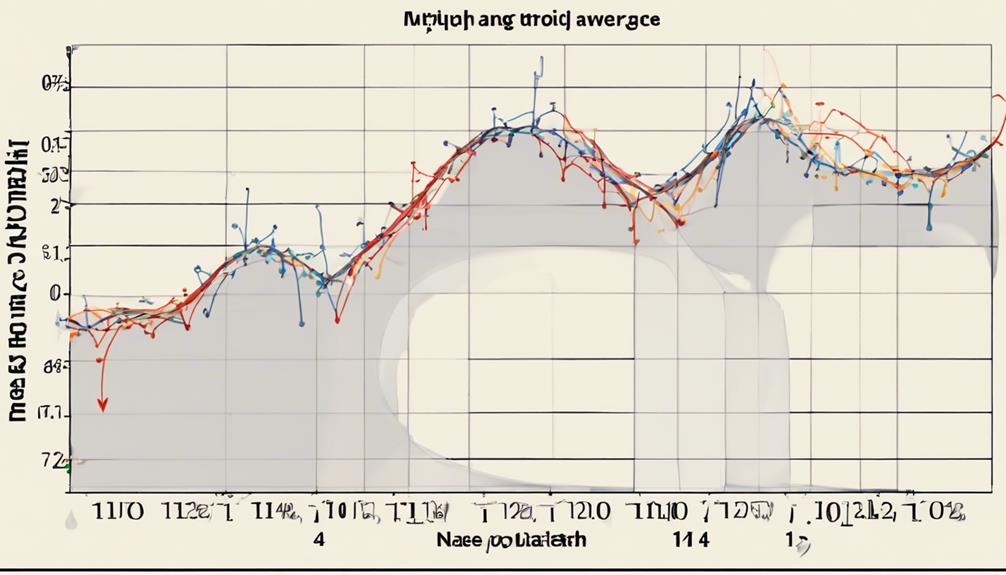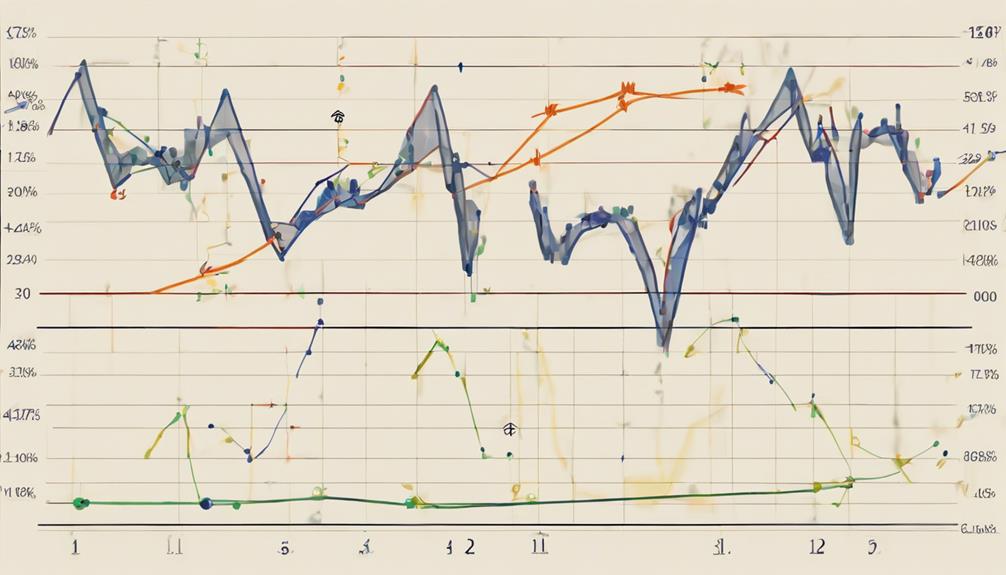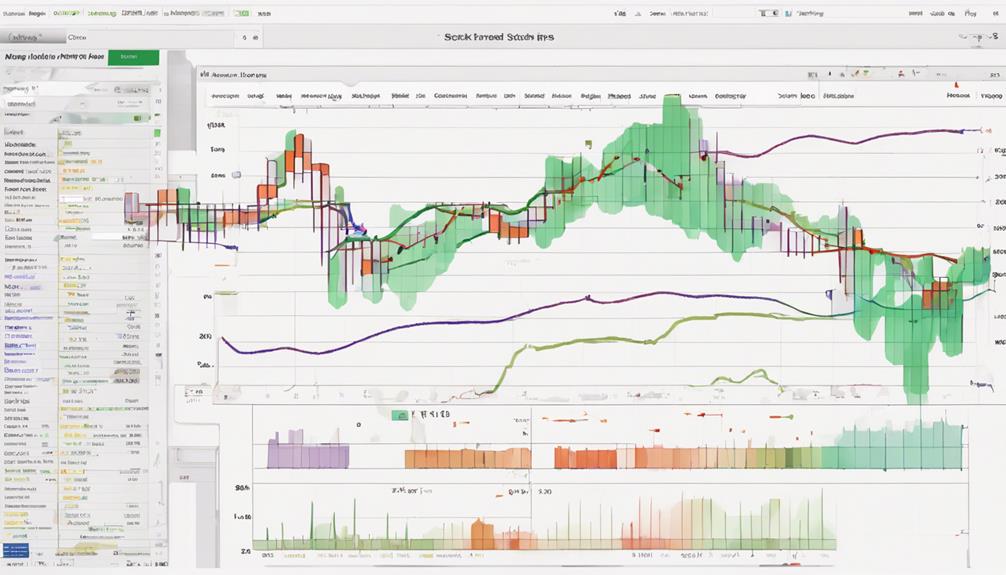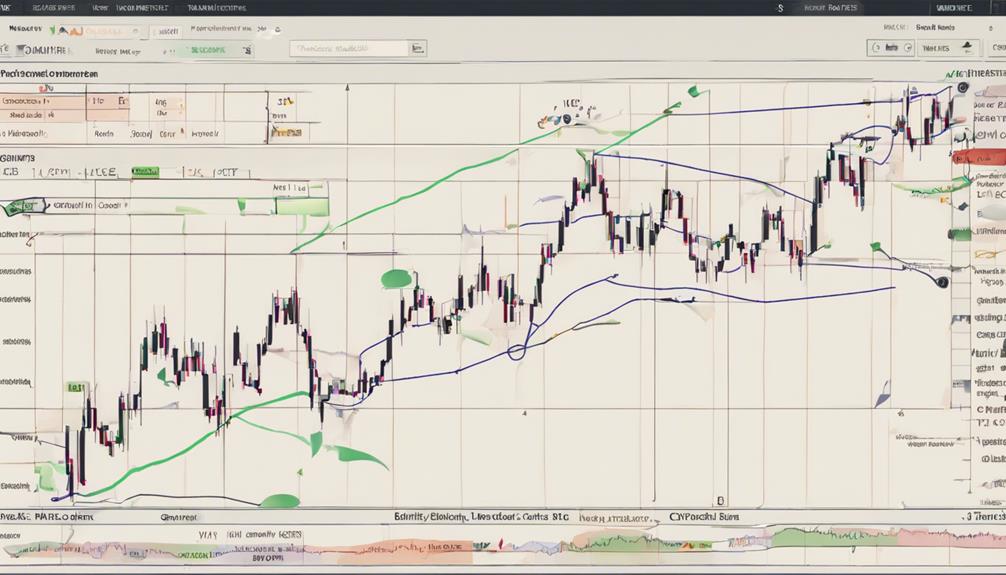So, you think you've got moving averages all figured out? Think again. There's more to these lines on your chart than meets the eye. Understanding the nuances of moving averages can make or break your trading decisions.
From avoiding common pitfalls to mastering advanced techniques, these ten tips will sharpen your skills and help you navigate the complexities of the market with confidence.
Stay tuned to uncover the secrets that could elevate your trading game to the next level.
Identifying Moving Average Types
To effectively identify different types of moving averages, it's crucial to understand their unique characteristics and how they impact the analysis of price trends.
Simple Moving Averages (SMAs) give equal weight to all prices, while Exponential Moving Averages (EMAs) assign greater importance to recent prices, resulting in more responsiveness to market changes.
Weighted Moving Averages (WMAs) prioritize recent data points, making them sensitive to price fluctuations.
Hull Moving Averages (HMAs) offer smoother trend lines by incorporating current price data effectively, reducing lag.
Adaptive Moving Averages (AMAs) excel by adjusting their sensitivity according to market conditions, optimizing performance in various trends.
Calculating Moving Averages Correctly

Understanding how to accurately calculate different types of moving averages is essential for effective price analysis in financial markets.
The Simple Moving Average (SMA) is calculated by summing the closing prices over a specific number of periods and dividing by that number.
On the other hand, the Exponential Moving Average (EMA) gives more weight to recent prices, making it a more responsive trend-following indicator.
Weighted Moving Average assigns varied weights to data points, emphasizing certain periods in the calculation.
Properly calculated moving averages help identify trends and potential market reversals. Mastering the calculation methods enables traders to select the most suitable moving average type for their trading strategies, providing valuable insights into market movements.
Interpreting Moving Average Crossovers

When analyzing moving average crossovers, focus on the signals generated when short-term moving averages cross above or below long-term moving averages. A bullish signal occurs when the short-term moving average surpasses the long-term moving average, indicating a potential uptrend. Conversely, a bearish signal emerges when the short-term moving average falls below the long-term moving average, suggesting a possible downtrend.
Traders utilize these crossovers to confirm trend reversals and determine entry or exit points effectively. Understanding the significance of different timeframes and the relationship between various moving averages is crucial for interpreting these signals accurately. By paying attention to moving average crossovers, you can make informed decisions in the market based on these key indicators.
Utilizing Moving Averages for Trend Analysis

How can moving averages be effectively utilized for trend analysis?
Moving averages are essential tools for traders to assess market trends. By smoothing out price fluctuations, moving averages provide a clear indication of the market direction based on historical data. Traders often look at the relationship between different moving averages to determine trend strength and sustainability. These indicators can help identify potential support and resistance levels, aiding in decision-making processes.
Incorporating moving averages into trading strategies enhances trend analysis and improves overall trading success rates. Whether using simple moving averages or more complex strategies involving moving average crossovers, these technical indicators play a crucial role in understanding market dynamics and shaping effective trading strategies.
What Are the Best Ways to Use Moving Averages Effectively?
When it comes to trading, utilizing moving averages effectively can help identify trends and potential entry points in the market. Whether it’s using a simple moving average or experimenting with exponential moving averages, incorporating these tools into your strategy can lead to more informed decision-making and improved overall results.
Enhancing Analysis With Other Indicators

Enhancing market analysis can be achieved by integrating moving averages with various technical indicators to validate trend signals and confirm market dynamics.
Combining moving averages with indicators like the Relative Strength Index (RSI) offers a way to confirm trends. Using the Moving Average Convergence Divergence (MACD) alongside moving averages enhances trend confirmation.
Incorporating volume analysis with moving averages helps gauge market trend strength. Pairing moving averages with trendlines enables a comprehensive analysis of trend direction and possible reversals.
Integrating moving averages with oscillators such as the Stochastic Oscillator provides additional insights into market momentum. By utilizing these indicators in conjunction with moving averages, traders can gain a more comprehensive understanding of market trends and make informed trading decisions.
Can you explain the concept of Moving Averages and how they can be effectively used in trading?
Moving averages are a key tool in trading. They smooth out price data to create a single line, making it easier to identify trends. The most effective way to use them is to combine different time periods for a more accurate picture of a stock’s movement. Here are some top moving averages tips.
Frequently Asked Questions
What Is the 10 Simple Moving Average?
The 10 Simple Moving Average (SMA) calculates the average closing price over the last 10 days. It helps identify short-term trends and support/resistance levels. Traders use it for quick price responsiveness and to confirm trend directions for informed decisions.
What Is the 10 Point Moving Average?
The 10-point moving average is derived from averaging the closing prices of the last 10 trading days. It offers a smoothed trend line that swiftly reacts to price changes, aiding traders in assessing short-term market sentiment and potential reversals.
What Is 10 EMA Strategy?
Imagine navigating market trends with precision. The 10 EMA strategy, leveraging the 10-day exponential moving average, offers a responsive gauge of current conditions for traders. Enhance your analysis by combining it with other indicators.
What Is the 5 8 13 21 EMA Strategy?
To decode the 5 8 13 21 EMA strategy effectively, focus on the crossover of these specific exponential moving averages. Short-term traders rely on the sensitivity of these EMAs to pinpoint entry and exit points accurately.
Conclusion
In conclusion, mastering the art of decoding moving averages is crucial for successful trading.
By understanding different types of moving averages, interpreting crossovers, and utilizing them for trend analysis, you can make informed decisions in the market.
Remember, just like a skilled musician can read between the notes, a proficient trader can decipher the subtle movements in the market with precision and expertise.
Keep refining your strategies and stay ahead of the curve.


